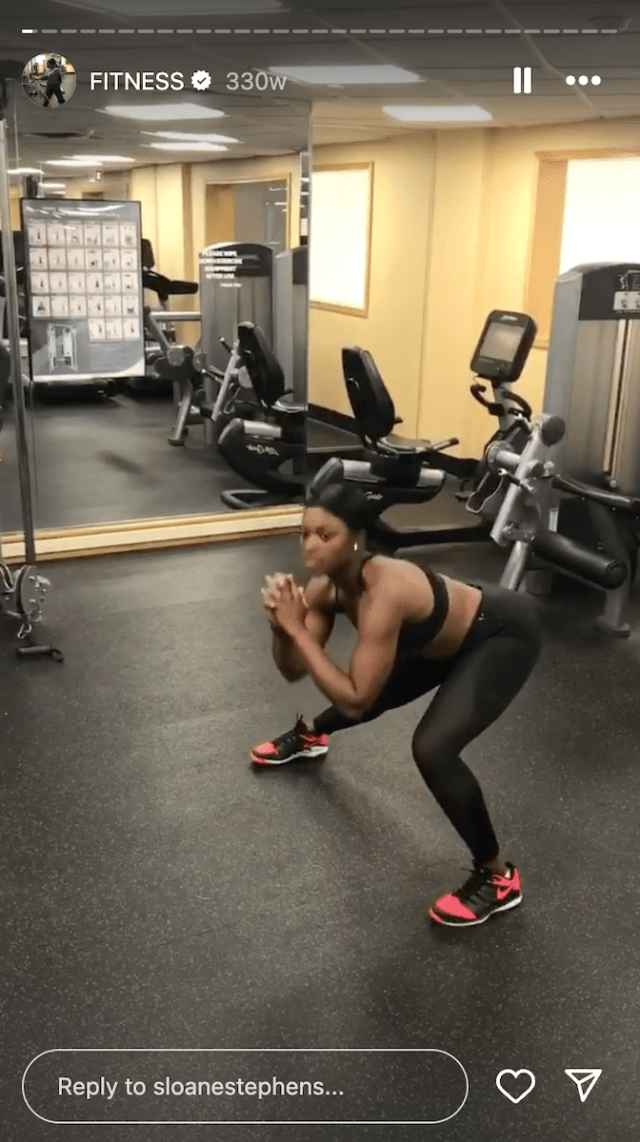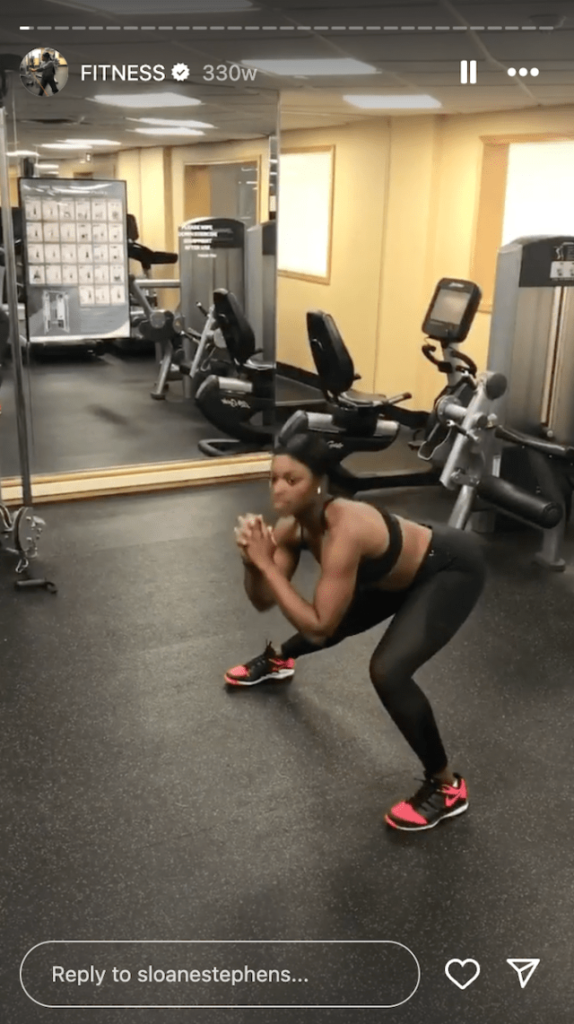Sloane Stephens is making a racquet on social media – in her workout gear. In a new post the tennis star shows off her strong arms in a sleeveless top and tennis skirt. “Spring into it 🌸🌼🌺,” she captioned the post. How does the athlete approach diet, fitness, and self-care? Here is everything you need to know about her lifestyle habits.
Sloane doesn’t have a lot of “rules” or restrictions when it comes to eating. “The main thing is that I try to eat a lot of roughage,” she told Well + Good about the importance of fiber. “When I was a kid, I didn’t like salads, but as I’ve gotten older I try to have something green with every meal.”
Sloane makes sure to hydrate, drinking plenty of water prior to hitting the court.
Sloane starts the day with Greek yogurt. “I’ll put some fruit, granola, and honey on top to make it a little fancy,” she says. She might also have plain oatmeal with raisins. For lunch, sometimes she’ll make a quick protein packed smoothie. “I’ll make a smoothie with oat milk, peanut butter, honey, and vanilla protein powder,” she says. “It’s so delicious that it seriously tastes like dessert.” Or she might cook homemade salmon and a salad. “I cook my salmon with lots of lemon juice and add plenty of avocado [to the salad],” she says. “I probably eat that for lunch three to four times a week. Living in Florida, I’m lucky to be able to get fresh fish really easily.” Dinner might be a big Greek-style salad with lamb chops or chicken and veggies. “I’m a picky eater, so I keep it pretty basic,” she says.

When she’s prepping for tournaments, she’ll start training around 8 a.m, playing two hours before lunch. She then will play from 1:00 to 2:30, and then hit the gym for conditioning from 3:00 to 4:00, doing treadmill and bike sprints along with dynamic movement and loading and transferring power. “These movements directly correlate to tennis and best positioning myself on the court to hit the most powerful shot and run down balls,” she tells Women’s Health.
During the off-season, she also trains “so I’m making sure I’m not gaining weight, I’m not eating crazy, things like that—just monitoring,” she told Women’s Health. She does training blocks so she’s not “rusty” when competition resumes. “So that when I start playing tennis, I’m not, like, literally dying,” she says. She does a lot of pure cardio — sprints, intervals, and steady state — and strength training. “The strength work is all focused on dynamic movement and incorporates a lot of bodyweight [moves] and resistance bands,” she says.

